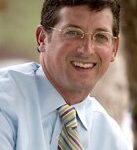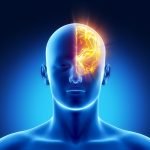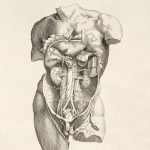The Key to Understanding How Men Experience Chronic Disease
Steve Rissman, ND
While it has long been known that men die of chronic disease at much higher frequency than women, it has not generated much interest until recently. In 2009, the 6th Men’s Health World Congress selected as its theme “Why Men Die Earlier and Suffer More,” which attracted almost 1000 participants from 69 countries. This year’s Men’s Health World Congress, held in Vienna, Austria, October 2-5, 2011, was titled “Men and Ageing: A Life-Long Process! Improving Health by Ensuring Interdisciplinary Care.”1 The Men’s Health Network, a national nonprofit organization with a mission to reach men for health improvement and the sponsor of National Men’s Health Week, has as one of its stated goals to “Save men’s lives by reducing premature mortality of men and boys.”2 Randolph Nesse, MD, professor of psychiatry and psychology at the University of Michigan, Ann Arbor, and author of several books on evolutionary medicine, was quoted as stating the following: “Being male is now the single largest demographic factor for early death. If you could make male mortality rates the same as female rates, you would do more good than curing cancer.”3 This statement confirms the importance of a growing momentum for the idea that men’s health issues are preventable. Men can acquire a different mind-set about how to author their lives, a concept well-rooted in naturopathic medicine principles.
The Social Construct of Masculinity
There seems to have been some complacency around the idea that men experience higher rates of chronic disease than women, and the reason for this had been centered on the idea that men simply do not want to care for themselves. However, recent evidence demonstrates that the key to understanding why men historically do not take care of themselves lies in the understanding of the social construct of masculinity. New research on how men experience chronic illness, such as osteoporosis, diabetes mellitus, and heart disease, is leading the way toward changes in healthcare delivery methods, such that men are encouraged and supported for taking care of themselves.
Self Image vs Self Care
A 2011 study by Nielsen et al4 at the University of Southern Denmark, Odense, provides important insight into the experience of men diagnosed as having osteoporosis, which is similar to the experience of men with breast cancer and other chronic diseases. Osteoporosis is predominantly known as a women’s disease; therefore, several issues arise that are unique to men with the diagnosis. Because of the image of frailty (men are “supposed to be strong”) associated with osteoporosis and other chronic illnesses, men stay away from physicians to avoid being diagnosed. Often when they do finally go see a physician, it is too late, and bone fractures occur. Men kept up their normal level of physical activity, despite bone fractures, to support their self-image as men and to negate their self-identification as “sissy” and “whiner.”
Furthermore, because osteoporosis is thought of as a woman’s disease, men and their physicians are not educated on recognizing risk factors. Raphael and colleagues5 authored a qualitative study to explore men’s perceptions of osteoporosis. According to their findings, men often reported that information given to them on osteoporosis was biased toward informing women and was not applicable to men.
In consideration of the holistic perspective of men, it is important to note that the study by Nielsen et al4 discussed the isolation perceived by men with osteoporosis. Men were reluctant to be open about the disease because the diagnosis was not taken seriously and was even joked about. Partners and colleagues often told them to simply “get over it,” even with bone fractures that limit physical ability. Similar results were found in a male breast cancer study,6 as well as in a diabetes study, in which it was concluded that masculinity is rarely explored and that there is an absence of masculine perspectives in diabetes education and management research.
Men are strongly bound to their sense of honor, and physicians need to understand this when creating a treatment plan. In the osteoporosis study,4 it was noted that advice in the form of restricted activity or other demasculinizing suggestions would likely be met with resistance. Substitution of advice that preserves the sense of honor as a man, such as physical therapy, will earn greater patient compliance.
Acceptance Beats Social Isolation
From early childhood, boys and young men receive contradictory messages about taking care of themselves. Research shows that parents (both moms and dads), other adults like teachers and coaches, and peers discourage boys from asking for help.8 Considerable media attention is given to the aggressive dad who pushes his kid to be tough out there on the soccer field. Women are also guilty of withholding physical touch with their sons to keep them from being too “soft” and of encouraging them to be “mommy’s little soldier.” Indeed, boys are even ridiculed and punished for seeking help, part of what Dr William Pollack,9 clinical professor of psychiatry at Harvard Medical School, Boston, Massachusetts, defined as the “boy code” in his 1998 groundbreaking research. Boys are encouraged by health professionals to seek help for their physical, psychological, emotional, and even spiritual struggles but are pressured to become stoic and independent, avoiding the expression of feelings, which is thought to be “feminine.” Therefore, many boys, despite their natural desire for nurturance, learn to abandon their needs and take on the behavior of traditional masculine roles. These masculine stereotypes are adopted by many young men under necessity to be accepted, as is evident if you spend much time on college campuses, at the gym, or at a sports event. Too often, men deny their individuality and put on the mask of traditional masculine role behavior in which men deny their needs, even medical ones.10 Those who buck the tendency to conform and maintain their sensitivity pay the price of marginalization, which is social isolation.
Hanna Rosin11 wrote a provocative article titled “The End of Men,” in which she suggests that in a postindustrial economy men are less suited for being in positions of leadership because they lag in areas of social intelligence, communication, and ability to focus. Even more relevant is the comment by Ann Friedman: “She thinks the problem is men; really, it’s traditional gender stereotypes. The narrow, toxic definition of masculinity perpetuated by Rosin and others—that men are brawn not brains, doers not feelers, earners not nurturers—is actually to blame for the crisis.”12 Indeed, traditional masculine ideologies have a price. In his work looking at the health behaviors of college men, Dr William Courtenay,13 internationally recognized social scientist and researcher on men and boys, found that traditional attitudes about masculinity have been linked with poor health behavior, including smoking, alcohol and drug use, and behaviors related to safety, diet, sleep, and sexual practices. College men who rigidly adhere to traditional notions of manhood have more disease risk, including increased anxiety, poorer health habits, greater cardiovascular reactivity in situations of stress (leading to heart attacks), higher levels of depression, more vulnerability to psychological stress and maladaptive coping patterns, and a tendency to not seek help from others and to underuse professional services on campus.
Concerns about men’s academic success have also been linked to masculinity. In a study14 of college men looking at how the meaning of masculinity influences motivation in higher education, statistically lower scores for intrinsic stimulation (self-motivation), accomplishment, and desire to learn were observed among men who demonstrate a “player” mentality about sexuality, believe that violence is acceptable, and have a lower primacy to work. Conversely, men who put reduced emphasis on winning, displayed less rigorous emotional control (rather than the old idea that only girls cry), and had decreased self-reliance (such that they could ask for help from others) were more apt to engage in self-investigation and development through intrinsic motivation. These men who have broader definitions of manhood and masculinities had higher academic motivation. One could extrapolate that men with greater self-investigation (who am I, how do I feel, what are my beliefs, and what do I value, etc) would be more likely to seek better methods of creating health.
Traditional Ideologies and False Notions
Perhaps this is the moment in time for men to finally say no to traditional ideologies of masculinity, which seem to be based on false notions anyway. Beatty et al found that college men view their peers as “more stereotypically masculine than their peers self-report. This misperception may lead them to behave in more stereotypically masculine ways and construct their gender schema with more stereotypical masculine beliefs, potentially resulting in negative health outcomes.”15(p) So, guys tend to act more “manly” simply because they think that other guys feel more masculine, when in fact they do not. Masculine ideologies that do not represent individual men’s experiences are what get perpetuated.
The stress that accompanies adherence to traditional ideologies of manhood has led to what is known as the gender role conflict theory, defined as a psychological state in which socialized gender roles have negative consequences on the person or others, which occurs when rigid, sexist, or restrictive gender roles result in personal restrictions, devaluation, or violation of others.16 In other words, when there is a gap between a guy’s natural state of masculinity and a socialized “mask” of masculinity, he will likely experience a level of stress, decreasing his overall level of health. Gender role conflict has been associated in male college students with decreased psychological well-being, increased levels of shame and alexithymia (inability to express feelings), low ego identity, and poor ability to create intimacy. Associated with gender role conflict is also a drive for muscularity and high-risk health behavior, as well as increased levels of anger, helplessness, self-destructiveness, suicide probability, and dysfunctional patterns in interpersonal relations, including marital dissatisfaction and negative attitudes toward women and minorities.
In his book Under Saturn’s Shadow: The Wounding and Healing of Men, James Hollis writes: “We are born free, bearing the germ of wholeness and health, and then life happens. Where did it go? Why the heaviness, the body ache, the soul fatigue, the ennui of brain and bone? What happened to that child, afraid but full of itself?”17(p)
Road to Better Self Care
For too long, men have been enduring the burden of living without any connection to meaning, which translates into poor health behaviors. In response to rapid changes in the world, including globalization, economic crises, and environmental issues, men are slowly opening the door to a new way of life. More men than ever are staying at home as the primary caretaker of their children, fulfilling a need to nurture that was robbed so long ago. More men are finding their way into therapy and groups to address their challenges. Hospitals and clinics are discovering new and creative ways to bring healthcare to men at sporting events and at other venues frequented by men. New studies, such as that by Nielsen et al4 on men with osteoporosis, are paving the way for understanding men’s experience of disease.
Perhaps the gift of the focus on men’s health is the push over the edge that men have long needed to shed the burden of constraint of traditional male roles. The great Dr Bill Mitchell, cofounder of Bastyr University, Seattle, Washington, once said that “intention is the mother of actualization.” There may be an opportunity now to set the intention of embracing new ideologies of masculinity, whereby men are free to reacquaint with the wholeness that Hollis17 writes about, to take care of themselves, and to be supported for doing so, especially when faced with chronic disease.
 Steven Rissman, ND earned his ND in 1996 at Bastyr University in Seattle, Washington, where he completed his residency. Dr. Rissman has maintained a private practice in the Denver area since 1998 and in 2002 began teaching at Metropolitan State College of Denver where he is currently a tenure track professor in the Department of Health Professions. He was instrumental in the development of a new major called Integrative Therapeutic Practices, in which he teaches Clinical Pathophysiology, Holistic Health, Men’s Health, Complementary and Alternative Medical Therapies and Introduction to Homeopathy. Dr. Rissman speaks frequently about topics in men’s health. He presented “A Naturopathic Approach to Anger in Men” at the American Men’s Studies Association’s 17th Annual International Conference on Men and Masculinities in Montreal, Quebec in April 2009. And in August, Dr. Rissman spoke at the AANP convention in Tacoma on naturopathic medicine and young men’s health issues. Dr. Rissman lives on a farm north of Denver, Colorado with his partner and their son, where they raise, train and show paint horses.
Steven Rissman, ND earned his ND in 1996 at Bastyr University in Seattle, Washington, where he completed his residency. Dr. Rissman has maintained a private practice in the Denver area since 1998 and in 2002 began teaching at Metropolitan State College of Denver where he is currently a tenure track professor in the Department of Health Professions. He was instrumental in the development of a new major called Integrative Therapeutic Practices, in which he teaches Clinical Pathophysiology, Holistic Health, Men’s Health, Complementary and Alternative Medical Therapies and Introduction to Homeopathy. Dr. Rissman speaks frequently about topics in men’s health. He presented “A Naturopathic Approach to Anger in Men” at the American Men’s Studies Association’s 17th Annual International Conference on Men and Masculinities in Montreal, Quebec in April 2009. And in August, Dr. Rissman spoke at the AANP convention in Tacoma on naturopathic medicine and young men’s health issues. Dr. Rissman lives on a farm north of Denver, Colorado with his partner and their son, where they raise, train and show paint horses.
References
- International Society for Men’s Health. Men’s Health World Congress 2011: Men and Ageing: A Life-Long Process! Improving Health by Ensuring Interdisciplinary Care. http://www.menshealthworldcongress.org/en/. Accessed September 22, 2011.
- Men’s Health Network. http://www.menshealthnetwork.org/. Accessed July 8, 2011.
- BBC News. Being a man is ‘bad for health.’ http://news.bbc.co.uk/2/hi/health/2148573.stm. Accessed July 17, 2011.
- Nielsen DS, Brixen K, Huniche L. Men’s experiences of living with osteoporosis: focus group interviews. Am J Mens Health. 2011;5(2):166-176.
- Raphael HM, Gibson BJ, Lathlean JA, Walker JM. A grounded theory study of men’s perceptions and experience of osteoporosis. Bone. 2009;44(suppl 2):S187-S534.
- France L, Michie S, Barrett-Lee P, Brain K, Harper P, Gray J. Male cancer: a qualitative study of male breast cancer. Breast. 2000;9:343-348.
- Jack L Jr, Toston T, Jack NH, Sims M. A gender-centered ecological framework targeting black men living with diabetes: integrating a “masculinity” perspective in diabetes management and education research. Am J Mens Health. 2010;4(1):7-15.
- Courtenay WH. Constructions of masculinity and their influence on men’s well-being: a theory of gender and health. Paper presented in partial fulfillment of the doctoral degree at: University of California, Berkeley; June 26, 1996; Berkeley, California.
- Pollack W. Real Boys: Rescuing Our Sons From the Myths of Boyhood. New York, NY: Random House; 1998.
- Verdonk P, Seesing H, de Rijk A. Doing masculinity, not doing health? a qualitative study among Dutch male employees about health beliefs and workplace physical activity. BMC Public Health. 2010;10:e712. http://www.ncbi.nlm.nih.gov/pmc/articles/PMC2998494/?tool=pubmed. Accessed September 22, 2011.
- Rosin H. The end of men: women are dominating society as never before. Atlantic Monthly. 2010;306(1):56
- The American Prospect. Friedman A. It’s not the end of men: contra Hanna Rosin, the problem isn’t men; it’s traditional gender stereotypes. June 10, 2010. http://prospect.org/cs/articles?article=its_not_the_end_of_men. Accessed September 22, 2011.
- Courtenay WH. Engendering health: a social constructionist examination of men’s health beliefs and behaviors. Psychol Men Masculinity. 2000;1(1):4-15.
- Kahn J, Holmes J, Brett B. Concerns with men’s academic motivation in higher education: an exploratory investigation of the role of masculinity. J Mens Studies. 2011;19:65-82.
- Beatty A, Syzdek M, Bakkum A. The Saint John’s Experience Project: challenging men’s perceptions of normative gender role conflict. J Mens Studies. 2006;14(3):322-326.
- O’Neil JM, Good GE, Holmes S. Fifteen years of theory and research on men’s gender role conflict: new paradigms for empirical research. In: Levant R, Pollack W, eds. The New Psychology of Men. New York, NY: Basic Books; 1995.
- Hollis J. Under Saturn’s Shadow: The Wounding and Healing of Men. Toronto, ON: Inner City Books; 1994:chap 1.
[Word count: 2,389]










